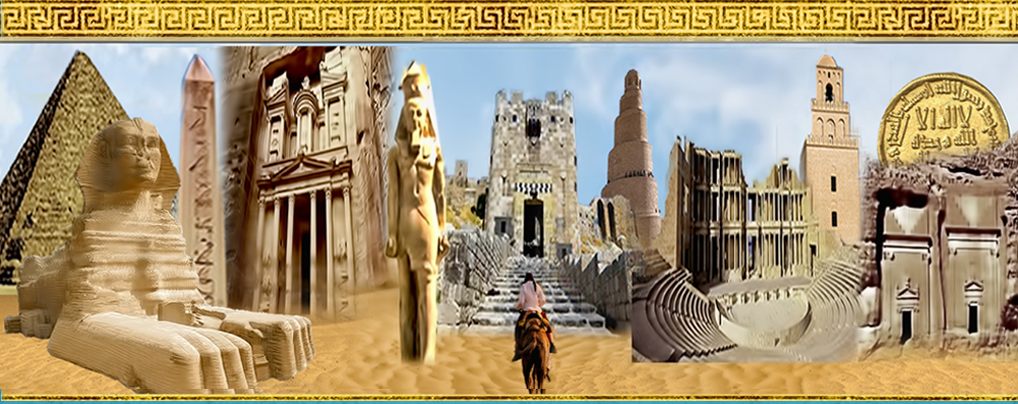Journal of the General Union of Arab Archaeologists

Abstract
(Ar)
صناديق حفظ العمامة في العصر المغولي الهندية كمؤشرات ثقافية دراسة حضارية فنية
تعبر التحف التطبيقية في عصر أباطرة مغول الهند عن حضارة المغول وإبداعتهم، وتعتبر صناديق حفظ العمامات مثالا رائعا لتلك التحف التي تعبر عن حضارة المغول، وتهدف الورقة البحثية لدراسة فنية لهذه الصناديق وكذلك ومسمي جعبة دستار وعلاقة المسمى بأداء الوظيفة التي من أجلها صنعت هذه الصناديق، ولقد كان لفلسة المغول بالهند سواء الأباطرة والأمراء في الاهتمام بالعمامة ومكانتها لديهم دور كبير في ظهور صناديق مخصصة للعمامة، وكانت العمامات تزين بالأحجار الكريمة والجواهر الغالية الامر الذي أدي أيضا إلى ظهور هذه الصناديق، وتعدد طرز صناديق حفظ العمامات في العصر المغولي الهندي فمنها المغطى بغطاء علي هيئة قباب بصلية وأنصاف كروية ومنها ذات الأشكال المضلعة، وظهرت التأثيرات البيئية بشكل كبير على زخارف هذه الصناديق وكان الزخارف مرتبطة بشكل كبير بثقافة الأقاليم الهندية التي أنتجت هذه الصناديق سواء مناظر معبودات أو مناظر كائنات حية وخرافية وزخارف نباتية وهندسية، وتهدف الورقة البحثية ايضا إلى دراسة المواد المستخدمة في صناعة هذه صناديق حفظ العمامات، فأستعمل الأخشاب والأوراق المعجنة papier-mâché كمواد أساسية في صناعة صناديق حفظ العمامات بعد أن تتم معالجتها لتصبح صالحة لأداء وظيفة الصندوق دون الحاق الضرر بمحتويات الصندوق من مواد غالية القيمة، ولقد تأثرت صناديق حفظ العمامات في تصميمها العام بشكل كبير بالمنشآت المعمارية كتأثير من العمارة المغولية الهندية المعاصرة.
(En) Artifacts and fine industries flourished in the era of Mughal- Indian emperors, as shown in Turban boxes that were known as juaba distar; a Persian phrase for boxes used to keep turbans. The Mughals, including emperors or princes, paid great attention to turban boxes because of the importance of the turban itself that reflected the position of its user, especially at the time of Babur. At the time of Hamayun , the turban was used to climb high places by connecting its parts. The turban was decorated with jewelry and gemstones more than ever, especially at the time of Jahangir. The feather and stick on which the jewel was fixed were made of gold. Therefore, small boxes with the same design as the turban boxes were introduced. The boxes generally comprised two parts: The body and the cover. There were several artistic styles, such as the box of a circular body and a semi-spherical dome, and the style of a circular body and onion-like dome. The third style comprised a small base, a wider upper part, and a convex dome. The fourth style was a circular decagon body and a polygon dome, whereas the fifth style had an octagonal body. The small boxes with the same design were almost used for keeping the turban's accessories, including the diamond and the golden stick. The dimensions of the box were suitable for the function of keeping the turban, and the cover ensured protection. Wood and papier-mâché were used for manufacturing the boxes, but they were treated with a lacquer to have isolated surfaces in order not to harm the turban and the accessories. The decorations implemented on the boxes reflected the culture of Northern India, especially Kashmir. Thus, these decorations included the deities of Hanoman, Kreshna, and Janetha, as well as animals, e.g., horses, foxes, and elephants. The paintings of the mythical beings representing the Indian environment, e.g., dragons, angels, and goblins resembled those of the manuscripts of Kashmir school at the time. Additionally, the paintings of men and women expressed strongly the Indian environment in terms of customs, facial features, or some characteristics of the paintings of Kashmir school, including the lock of hair hanging behind the ear. The floral motifs stressed the impact of the local environment, including flowers and trees in Northern India, such as Tulips and cypress trees. The general design of the distribution of decorations on the box achieved a balance between the body and the cover. The design of the boxes was affected largely in the buildings of India, including Indian and onion-like domes.
In the Mughal Indian era (932-1273A.H/1526-1857A.D), applied arts were the most important industry because it received due attention from the Mughal emperors and princes and Muslim princes in different regions. Therefore, several applied arts, including turban boxes appeared. The interest of Mughals in headgears, in general, and turbans, in particular, is an important issue in their culture. However, these boxes were not familiar with the previous cultures and arts. Turban boxes were used for the high material and moral value of the turbans and the precious gems they contain.
Recommended Citation
Thabet, Hamada
(2021)
"INDIAN MUGHAL TURBAN BOXES AS CULTURAL INDICATORS: CIVILIZATIONAL AND ARTISTIC STUDY,"
Journal of the General Union of Arab Archaeologists: Vol. 6:
Iss.
2, Article 9.
Available at:
https://digitalcommons.aaru.edu.jo/jguaa/vol6/iss2/9

